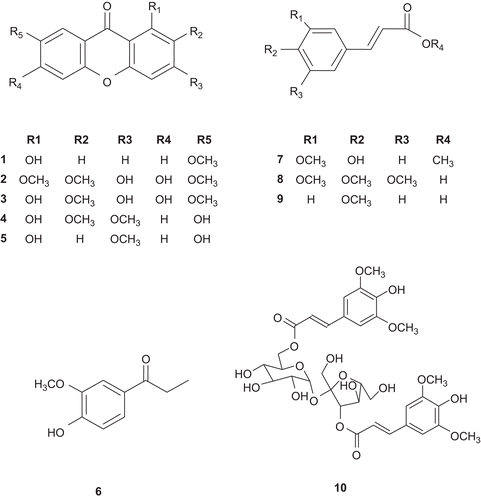Figures & data
Table 1. Effect of the isolated compounds from the roots of P. tenuifolia on lipopolysaccharide (LPS)-induced nitric oxide (NO) production in BV2 microglia.
Figure 1. (A) Effect of the methanolic extract and the fractions of P. tenuifolia on lipopolysaccharide (LPS)-induced nitric oxide (NO) production in BV2 microglia. BV2 cells were washed with phenol red-free Dulbecco’s modified Eagle’s medium (DMEM) and incubated with test samples for 1 h. The cultures were then stimulated by 100 ng/mL of LPS for 24 h. After incubation, NO production was measured by the Griess reaction and sodium nitrite was used as the standard. NO production (NP) of control and LPS-treated cultures were 1.0 ± 0.3 μM and 19.6 ± 2.9 μM, respectively. Relative NO production (%) was calculated as (NP of sample-treated− NP of control)/(NP of LPS-treated− NP of control) × 100 (%). LPS-stimulated value differs significantly from control at a level of P < 0.001. Results differ significantly from the LPS-treated, *P < 0.05, **P < 0.01 and ***P < 0.001, respectively. (B) Effect of the methanolic extract and the fractions of from P. tenuifolia on cell viability of BV2 cells. BV2 cells were incubated with compounds at the concentration of 10 or 100 µM for 24 h. Cell viability was measured by the MTT assay.

